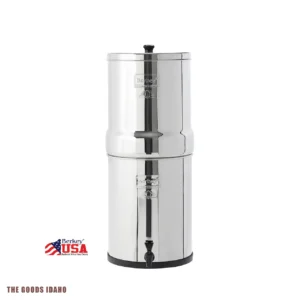Water Systems & Filtration
What are the basics for capturing and maintaining a water supply at home?
Capturing and maintaining a water supply at home involves several methods and strategies to ensure a reliable and safe source of water for household needs. Here are some basic steps and considerations:
- Source Identification:
- Municipal water supply: For many, the primary source of water is a municipal supply, which is usually reliable and meets safety standards.
- Wells: In rural or suburban areas, private wells are common. They require regular testing to ensure water quality and may need treatment to be safe for consumption.
- Rainwater harvesting: This involves collecting rainwater from roofs and storing it in tanks. It can be used for non-potable purposes or, with proper treatment, for drinking.
- Storage:
- Tanks and cisterns: These can be used to store water from various sources. They should be made of safe, durable materials and be covered to prevent contamination.
- Proper sizing: The storage system should be large enough to meet your household’s needs during times when the water supply may be interrupted.
- Water Treatment:
- Filtration: Removes particulates from water using physical barriers.
- Disinfection: Methods such as chlorination, UV treatment, or boiling can kill or neutralize pathogens.
- Water softening: If you have hard water, a water softener can remove minerals that cause scaling and other issues.
- Plumbing and Infrastructure:
- Pipes and pumps: Ensure that the plumbing system is well-maintained to prevent leaks and ensure efficient water delivery.
- Backflow prevention: Install devices to prevent contaminated water from flowing back into the clean supply.
- Maintenance and Testing:
- Regular inspections: Check your system for leaks, damage, or signs of contamination.
- Water quality testing: Have your water tested regularly for contaminants such as bacteria, nitrates, and heavy metals.
- Conservation Measures:
- Low-flow fixtures: Install low-flow toilets, showerheads, and faucets to reduce water usage.
- Water-efficient appliances: Choose dishwashers and washing machines that are designed to conserve water.
- Landscaping: Use drought-resistant plants and efficient irrigation systems to minimize outdoor water use.
- Emergency Preparedness:
- Backup supply: Keep bottled water or a portable filtration system in case of emergencies that disrupt your regular water supply.
- Regularly rotate stored water: If you store water for emergencies, make sure to use and replace it periodically to keep it fresh.
- Legal Considerations:
- Compliance with regulations: Ensure that any water capture or well drilling complies with local, state, and federal regulations.
- Water rights: Be aware of water rights issues in your area, as some regions have strict controls on water use.
By understanding and implementing these basic components, you can establish a robust system for capturing and maintaining a water supply at home that is both reliable and safe for all intended uses. Always consult with local experts and authorities to ensure compliance with all relevant regulations and to get specific advice for your situation.
